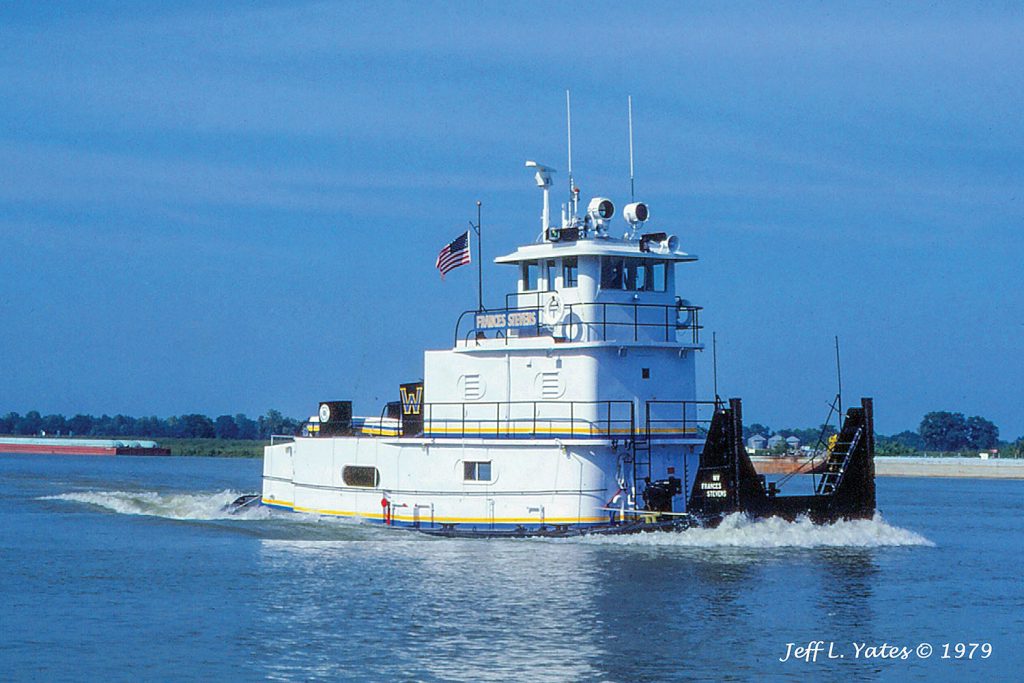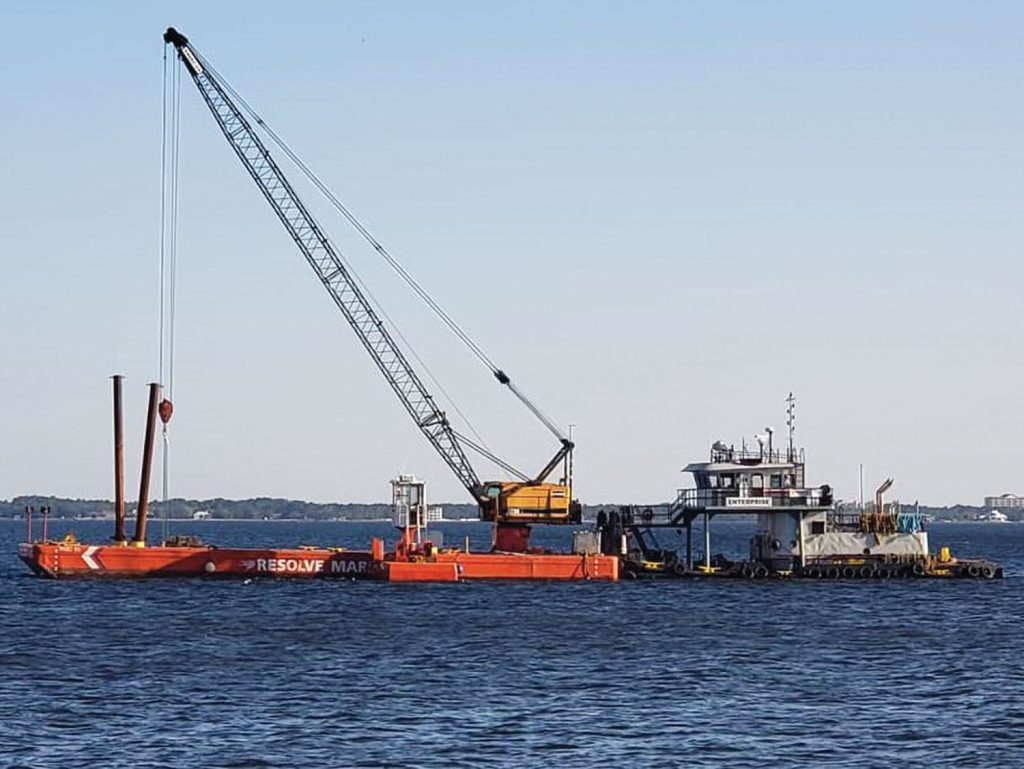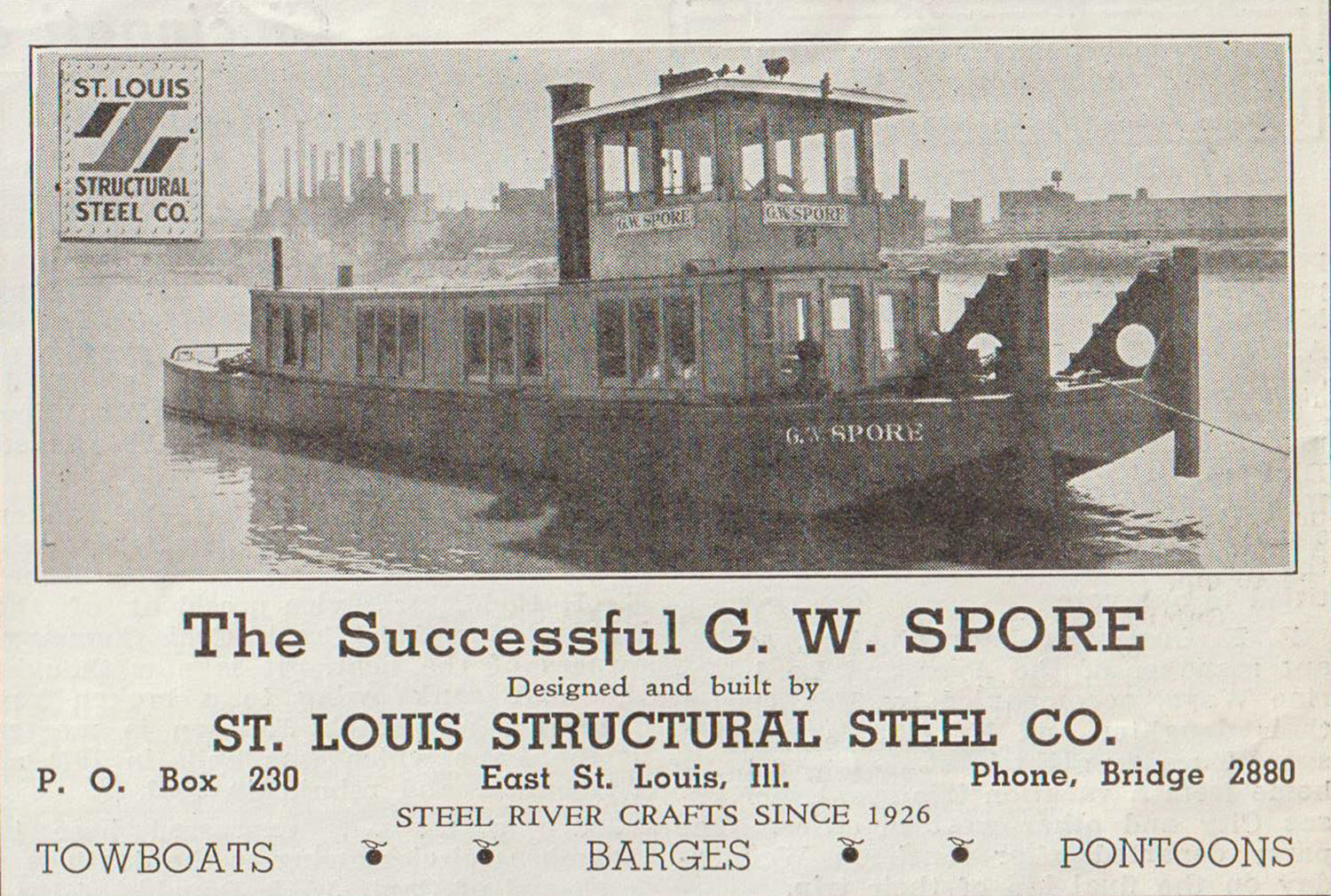In 1932, a small, relatively insignificant towboat was launched at East St. Louis, Ill., by the St. Louis Structural Steel Company. It had a steel hull of 64 by 15.5 by 5.5 feet with a tunnel stern. It was a single-screw vessel powered by a six-cylinder direct-reversing Kahlenberg diesel that had a variable horsepower rating of 150–180. The propeller was also manufactured by Kahlenberg, and, according to an ad in The Waterways Journal, it was of the “heavy steel towing type with 56-inch diameter.” The Kahlenberg ad also claimed that the boat would have a “pool water speed” of 10 mph. at 340 rpm. It is assumed this would be a light-boat speed.
The name of this little powerhouse was G.W. Spore, and the owner was Gipson Brothers, Memphis, Tenn.
Photos of the boat in The Waterways Journal show it to have a single low cabin, with countersunk spaces. A large pilothouse with a visible pilotwheel was located atop this, and a single smokestack was situated behind. The designer of this craft was Herman T. Pott.
Pott, born in Wisconsin in 1895, graduated from the University of Wisconsin in 1916 with a civil engineering degree. He eventually went to work for Dravo Corporation, Pittsburgh. Pott left there to work for the St. Louis Structural Steel Company, where he designed and oversaw the construction of vessels. By 1932, he was a vice president of the firm. In 1933, a year after the launch of the Spore, Pott, together with Everett Enslin (who had also worked with Pott at both Dravo and the Structural Steel Company) and R.C. Bradshaw purchased the Rohan Boat, Boiler & Tank Company at St. Louis, on the site where the Eads civil war ironclad gunboats had been built. They formed the St. Louis Shipbuilding & Steel Company, which would go on to be one of the premier shipyards of the inland waterways.
At some point, the owning company of the G.W. Spore became Industrial Marine Service, Memphis. In 1946, the boat was rebuilt and converted to twin prop. In this rebuilding it was repowered with a pair of GM diesels totaling 330 hp. It was again rebuilt in 1960, at which time the hull was widened to 21.5 feet. Caterpillar D353 diesels of 600 hp. were installed, and the name was changed to Shoofly.
It was again rebuilt in 1965, and in 1967 it was sold to C&P Towing/Walker Towing Corporation, Paducah, which renamed it Frances Stevens. In 1973, it received an updated version of the Cat D353 diesels with Cat 4.09:1 reduction gears, then giving it 850 hp.

As the Frances Stevens, the boat was a familiar sight on the lower Ohio River. When Ohio River Lock 50 was a huge bottleneck in the late 1970s and early 1980s, the Stevens was often seen with a full tow, at times turning other Walker Towing boats, but usually functioning as a “place holder” in turn at Lock 50. It was later most often seen tending the Walker midstream fuel barge at Paducah and continued in this service after being transferred to James Marine Inc. in 1994. In 2009, the venerable vessel was sold to Ritter Construction Company, Axis, Ala., near Mobile. In 2013 it was sold to Construction Solutions International Inc., also of Axis, and it was renamed Enterprise.
Curious as to whether the boat was actually still in service, I contacted the company and was routed to Jerry Bailey, who was kind enough to answer my questions. The answer was that yes, the boat was absolutely still in service. The present owners have reconfigured the cabin to fit their purpose and have increased the width of the hull by 3 feet on each side. To paraphrase Capt. Fred Way, this boat would certainly fit one of his unique vessel descriptions: “it was somewhat like the old family axe that had had two new heads and three new handles; there wasn’t much of the original left.”

Herman Pott, who passed away in 1982, would probably be very pleased to know that this early creation of his was still in daily use after 91 years, no matter what changes had been made to it. His St. Louis Ship went from originally constructing boats very similar to the G.W. Spore to building many of the most powerful towboats in operation on the Lower Mississippi River today before the yard closed in 1984.
Caption for top photo: St. Louis Structural Steel ad featuring the G.W. Spore, WJ June 30, 1934. (David Smith collection)




